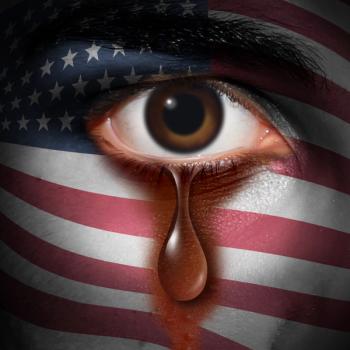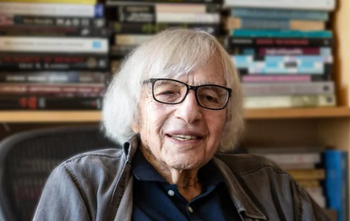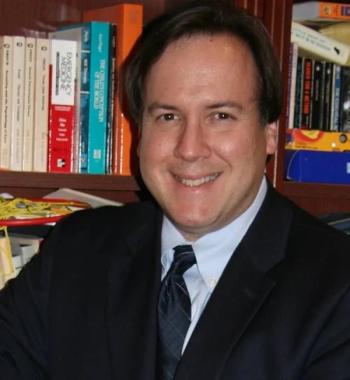
Acknowledging the Place of Placebo
A psychiatrist steeped in the scientific method considers the healing power of the placebo effect.
MIND-BODY ALLIANCE
Editorial note: Column #2:
Placebo: a harmless pill, medicine, or procedure prescribed more for the psychological benefit to the patient than for any physiological effect.
Nocebo: a detrimental health effect produced by psychological or psychosomatic factors, such as negative expectations of treatment or prognosis.
The mom said very little as I interviewed her teen-aged son, but her active eyes let me know that she took in everything that had been said. By the end of the assessment I was clear that this set of complaints did not line up with any usual diagnosis and was processing my list of medical illness that can masquerade as psychiatric issues. I needed lab work to take the next step but as is often the case in this rural part of the country I anticipated that the family would not have insurance to cover it. (Details of this case have been changed in respect of personal privacy, but the situation as described represents the clinical challenge.)
I handed the mom my lab requests and had started to explain where I thought the work could be done at least cost. She folded over the lab order and placed it thoughtfully in her purse, and then mentioned to me that they appreciated my effort but the family was going to pursue “natural” therapy to see if that might be useful. She named the product they would use. I pivoted into my “we will support whatever modality you decide to use” comment, and things were left in suspension as they left without making a follow up appointment.
That evening I did a quick web search to discover just what she had been talking about when she said “natural” therapy. My web search revealed that she was referring to an apparatus operating with a name that is printed out to look very much like the logo of a recognizable nation-wide laboratory service. The apparatus consists of 2 metallic handgrip bars that vibrate slightly and a set of blue lights that dance in various patterns in front of the person. While holding onto the brass handgrips, electronic sensors are said to detect something called energy signatures, and the online explanation reports that it detects 40,000 medical abnormalities. The product website includes a small disclaimer that the product “does not diagnose, cure, prevent or treat disease.” It further notes that those with a medical condition or concern should consult an appropriate health care professional. These statements are obviously meant to protect the company from any sort of legal liability. The problem, of course, is that the individuals who are making use of this product see the ream of “data,” not the disclaimer nestled on the bottom on the homepage.
I later got in touch with the family and asked for a copy of these results. The data print out covered more than 10 pages of supposed indicators, and I specifically noticed that the printout did not include the small disclaimer that was on the website.
I strongly suspected that there was a treatable cause for this young man’s symptoms, and doubted that it should be thought of as a psychiatric syndrome. I thought that he needed something much more substantial than a read out of the “energy signatures” of his body.
At the same time, you can see the attraction to the family of the “natural” evaluation. On the one and the patient’s family has Dr Gilbert, who looks worried, says he does not really know what is going on, and orders about $400 worth of lab work during the very first appointment. On the other hand, the family has the confidence of a local unlicensed practitioner/purveyor of this product who comfortably assures the family that he can quickly and inexpensively determine the problem and recommend a set of “natural” remedies to address it. After 4 or maybe 5 treatments, or perhaps a recommended course of supplements that he will be glad to sell them at a special discount price, all will be well. His fee is a lot less than $400.
I think I can say that this fancy apparatus offers a high-tech method to create a placebo effect. Harvard researcher Ted Kaptchuk
Other healing traditions
I want to be respectful of the placebo benefit, although the phrase can imply a worthless remedy, sold by a shyster. Of course, I need to stay centered in my own training and tradition as an allopathic physician. That training appropriately emphasizes the role of the scientific method to prove that something works. At the same time, I am humble enough to know there are other healing traditions that make other assumptions about causes of illness. Science is very important in my tradition, but science does not yet explain everything, and given the millions of visits that are made annually to non-allopathic healers in the United States, we have to conclude that they provide relief that is valued even if we do not understand how that happens.
There are several healing traditions that appear to rely on what allopathic medicine calls placebo:
—American Metaphysical Health Movement: Phineas P. Quimby (1802 to 1865) invented this approach to illness that is now carried on in a movement. It persists today in groups such as Christian Science, Unity, and Divine Science, all of which continue to serve a large following.3 At the time of its inception, this treatment option may well have gotten overall better results than the standard medical options of the day.
— Indigenous medicine: Notwithstanding the role that herbal preparations may play, virtually all indigenous medicine applies spiritual insights to their healing capacity through ritual and often community support.4
—
—
Healing traditions of organized religion
Somewhere in this conversation, we have to recognize that traditional, organized religious practice brings many of the benefits we attribute to mind-body therapies. A 10-year study of individuals who stated that religion was very important in their lives had one-tenth the frequency of depression compared with those who said religion was of no importance in their lives.8 A 16-year study involving almost 150,000 women revealed that those who attended religious services more than once per week experienced 33% lower all-cause mortality compared with women who had never attended religious services.9 Religion has been providing guided imagery, as well as therapeutic suggestion, meditation, and some forms of hypnosis for as long as we can track back through recorded history. Of course, there are many problems with a psychiatrist promoting specific religions to patients, but we certainly should support our patients’ proposals to make use of their own religion as a healing modality.
Challenged to participate in multi-modal care
Let me return to my teenaged patient being assessed with flashing blue lights and vibrating grip bars. The conversation about how to proceed presented obvious challenges. I attempted to respect the potential placebo effect, but at the same time perform my medical duties in an ethical way. There was yet another layer of complexity to the conversation, because this family belongs to a religious community that selectively uses allopathic medication, but does not enroll in individual health insurance programs. If there is an expensive diagnostic course, paying for it will involve communicating the whole process to the bishops of the community, who will have to agree that the costs of assessment and treatment will be borne by the community as a whole. My experience in the past is that the bishops of a particular community can be both very wise and very unpredictable. Getting them involved in an illness with vaguely defined symptoms would be a challenge, yet once involved I had found community support to be unwavering and I have to respect the research that points out that those for whom religion is very important have substantially better long-term outcomes than those who report no active religious involvement in their lives.
The clinical challenge is to proceed in a way that is respectful of the family’s experience of the mysterious electronic apparatus, but also allows the family to recognize this is not the most productive route for their son’s illness. As of this writing the family has dispatched their son to a residential program which purports to be based on “natural” healing. But they have left me with a very specific internal dialogue about the role of allopathic physicians in a multi-modal health care world. I will expand on that dialogue in the next column with an exploration of how Cognitive Behavior Therapy is part of the conversation of how we think about ourselves.
Dr Gilbert is a community psychiatrist contracting telepschiatry services to small community mental health centers in the rural area of his state. The author reports no conflicts of interest concerning the subject matter of this article.
The opinions expressed in the interviews are those of the participants and do not necessarily reflect the opinions of Psychiatric Times.
References
1. The power of the placebo effect: treating yourself with your mind is possible, but there is more to the placebo effect than positive thinking. Harvard Health Publishing. Accessed August 15, 2020.
2. Colloca L. How do placebo effects and patient-clinician relationships influence behaviors and clinical outcomes? Pain Rep. 2019;4(3):e758.
3. Braden C. Spirits in Rebellion. Southern Methodist University Press; 1987.
4. Kaptchuk TJ. Placebo studies and ritual theory: a comparative analysis of Navajo, acupuncture and biomedical healing. Philos Trans R Soc Lond B Biol Sci. 2011;366(1572):1849-1858.
5. Reiki(“RAY-kee”): “A Japanese form of energy healing believed to have originated in the late-19th century. Reiki centers on the manipulation of ki, the Japanese version of chi. Rei translates to God’s Wisdom or the “Higher Power" and Ki to “life force energy.” Reiki is the “spiritually guided life force energy.” Reiki is based on the belief that when spiritual energy is channeled through a reiki practitioner, the patient's spirit is healed, which in turn heals the physical body.” Medical Definition of Reiki. MedicineNet.
6. Chiropractic health practitioner: “A health profession concerned with the diagnosis, treatment and prevention of mechanical disorders of the musculoskeletal system, and the effects of these disorders on the function of the nervous system and general health. There is an emphasis on manual treatments including spinal adjustment and other joint and soft-tissue manipulation.”Definition of Chiropractic. World Federation of Chiropractic.
7. Perrine J. The Dangers of Neck Adjustment. SELF April 16, 2007. Accessed September 15, 2020. 9/15/2020.
8. Miller L,
9.Li S, Stampfer M, Williams D, et al. Association of religious service attendance with mortality among women. JAMA Intern Med. 2016;176(6):777-785.
Newsletter
Receive trusted psychiatric news, expert analysis, and clinical insights — subscribe today to support your practice and your patients.




